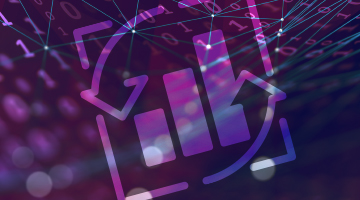2023 was a huge year for real-time data processing. Enterprises are more focused than ever using real-time data to guide the path forward, and things like AI are changing the game.
As technology continues to evolve, real-time data processing has transformed from something closer to a buzzword to something that’s actually achievable, especially with technologies like 5G and IoT firmly in place.
With that in mind, let’s take a look at five biggest real-time data processing trends of 2023.
Table Of Contents
1. Artificial intelligence
Enterprises today need to move as fast as possible, making data-driven decisions to grow revenue, mitigate risks, increase productivity, and deliver stronger customer experiences. As artificial intelligence (AI) continues to mature, the technology will transform the way that organizations make decisions in unprecedented ways.
AI can rapidly analyze vast datasets, identify patterns, and derive actionable insights, enabling organizations to make informed decisions as fast as data is generated. This, in turn, translates into increased efficiency, accuracy, and operational agility.
By continuously learning from incoming data streams, AI also improves over time, refining its understanding of patterns and trends. This iterative approach enables AI systems to dynamically adjust their models as new information comes in, providing the adaptability that old-fashioned rules-based systems lack. As a result, organizations can respond in real time to evolving scenarios, identifying opportunities and mitigating risks.
Additionally, AI-driven decisioning provides more precise data interpretation, reducing the likelihood of errors and false positives. This is particularly helpful in the finance, telco, and healthcare industries where complex decisions need to be made quickly.
2. Edge-IoT convergage
The convergence of edge computing and the Internet of Things (IoT) is poised to revolutionize real-time data processing by ushering in a new era of efficiency and responsiveness. As IoT devices proliferate — generating vast streams of data — edge computing brings processing power closer to the data source, reducing latency and enabling rapid decision-making at the network’s edge.
By processing data locally on edge devices, enterprises can collect critical insights quickly while minimizing the need to transmit data to centralized servers. Not only does this reduce network congestion, it also ensures that time-sensitive decisions are made promptly. Such functionality is particularly beneficial in industries like manufacturing and autonomous vehicles, which stand to benefit significantly from the instantaneous analysis of data at the edge.
What’s more, edge-IoT convergence enhances the scalability of real-time processing systems. Edge devices can be configured to handle data preprocessing tasks, filtering out irrelevant information and ensuring only relevant insights are sent to central systems. This distributed approach enables organizations to optimize resource utilization, supporting the scalabilty needed to accommodate the increasing number of IoT devices and associated data.
On top of this, edge-IoT convergence also delivers several security benefits. By processing data closer to the source, it’s easier to protect sensitive information because you don’t have to send it across networks to a central data center. It also also helps with sustainability by relieving data centers of their workloads.
3. IT-OT convergence
The convergence of information technology (IT) and operational technology (OT) brings together traditionally siloed domains, combining the strengths of IT’s data management with OT’s control and monitoring capabilities. As such, IT-OT convergence significantly impacts real-time data processing by creating synergies between information systems and operational processes.
While IT-OT convergence delivers several benefits, one of the most important impacts is increasing operational efficiency. Real-time data from OT systems — like sensors and industrial equipment — can be seamlessly integrated with IT systems, giving organizations a comprehensive view of both business and operational metrics. This holistic picture enables organizations to make information decisions in a timely fashion, further optimizing processes and resource allocation.
Additionally, IT-OT convergence enables organizations to take advantage of predictive and prescriptive analytics. By leveraging real-time data from operational processes, organizations can deploy advanced analytics and machine learning algorithms to forecast equipment failures, improve production schedules, and proactively address issues before they become serious problems. This predictive capacity minimizes downtime, reduces maintenance costs, and enhances the overall reliability of critical infrastructure.
This convergence also helps enterprises improve security by using real-time data processing to monitor and detect anomalies, ensuring a rapid response to potential security threats in both IT and OT environments.
4. Real-time data streaming
Real-time data streaming represents a paradigm shift in the real-time data processing landscape, enabling organizations to make data-driven decisions faster than ever before. By facilitating the continuous and instantaneous flow of data from sources to processing and analytics systems, organizations can uncover actionable insights and make informed decisions with near immediacy.
That’s because real-time data streaming enables organizations to process and analyze data as it’s created, eliminating latency and enabling immediate responses to dynamic events. For example, Volt Active Data’s Active(SD)™ enables organizations to add intelligent decisioning to Kafka data streams, enabling them to harness the full power of streaming data as it’s generated. This capability is particularly valuable in scenarios where split-second decisions are critical — like fraud detection in financial services or cross-selling and upselling customers in the moment for telco providers. It can also be a godsend when it comes to personalizing user experiences in ecommerce. By processing data in real time, organizations can instantly adapt their content, recommendations, and engagement strategies based on user behavior, increasing satisfaction and driving revenue.
Real-time data streaming also makes real-time data processing systems more scalable and flexible. As technology continues to evolve, traditional batch processing models are giving way to streaming architectures that handle data continuously, making it easier to accommodate the ever-increasing volumes of data generated by IoT devices and other sources. As a result, data processing systems can efficiently manage massive increases in data without compromising performance.
5. Not having to compromise
Speaking of not having to compromise: With the right data platform in place, organizations can accelerate their real-time data processing workflows without having to compromise on resiliency, consistency, or accuracy.
By selecting a platform with fault-tolerant architectures and distributed processing capabilities, organizations can rest comfortably with a resilient solution with automatic failover mechanisms that guarantee continuous operation — even in the event of hardware failures. For example, Volt Active(N) replicates data in real time across up to four or more data centers, ensuring data stays available with five-nines of availability — which is critical in the 5G era.
Organizations don’t have to trade resiliency for consistency or accuracy, either. By choosing a data platform designed to maintain ACID compliance, organizations benefit from increased data integrity and can process data in real time without compromising the underlying information.
Additionally, using real-time validation and error-checking mechanisms, organizations can also ensure that the insights generated from real-time data are precise, reliable, and actionable. With event-driven architecture and stream processing, organizations can extract meaningful insights from real-time data without sacrificing the quality of the results.
Unlock the full promise of real-time data processing with Volt Active Data
If you’re looking to act on data within milliseconds and scale to a million-plus transactions per second, Volt Active Data might very well be the data platform for you.
To learn more about why Volt is the ideal solution for real-time data processing in 2023 and beyond, try it for free today.




